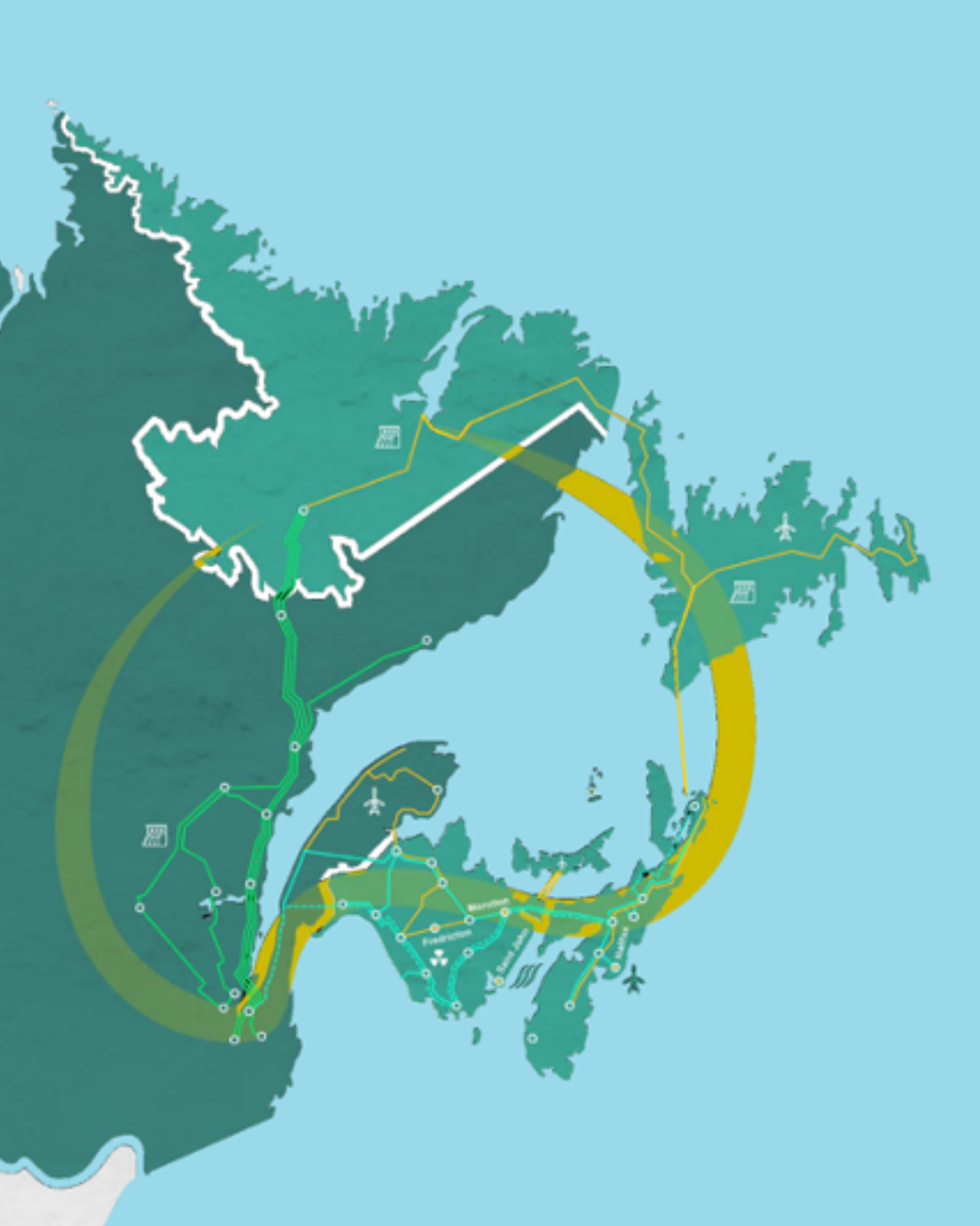
The federal government’s proposed Atlantic Regional Transmission Loop is being presented as a way to fight climate change by getting New Brunswick and Nova Scotia off coal. However, it might also have the unintended consequence of creating a confrontation between the federal government and Quebec or hurting Newfoundland and Labrador’s chances of becoming a major exporter of hydroelectricity, or both.
In mid-November, Emera CEO Scott Balfour shared his excitement about the proposed Atlantic Loop during a conference call on the energy conglomerate’s third quarter results. If completed, Nova Scotia Power, a subsidiary of Emera, would no longer be reliant on coal after 2029. This will mean that in the space of 25 years, Nova Scotia Power’s emissions will have fallen more than 94 per cent, far exceeding Canada’s Nationally Determined Contribution target of a 30 per cent decline over the same period.
The Atlantic Loop was mentioned once in the speech from the throne in September as a way for New Brunswick and Nova Scotia to reduce their reliance on coal. The loop as presented is intended to interconnect electricity suppliers in Quebec, Newfoundland and Labrador, New Brunswick and Nova Scotia, thereby improving regional reliability.

A rudimentary version of the loop already exists with interconnections between Quebec and New Brunswick, New Brunswick and Nova Scotia, Newfoundland and Labrador and Nova Scotia over the recently completed Maritime Link subsea cable, the Muskrat Falls hydroelectric project and the island of Newfoundland via the Labrador Island Link (LIL) subsea cable, the lines from Churchill Falls to Quebec and a small connection from Churchill Falls to Muskrat Falls.
As is often the case though, the devil is in the details.
Last January, at the Atlantic Premiers’ Conference held in St. John’s, Quebec Premier François Legault discussed the development of a regional grid with the four Atlantic premiers. Although Legault’s proposals were seen as integral to the region’s development of renewable electricity, there are a number of reasons why his vision of a regional grid like the Atlantic Loop is driven by far more than simply increasing sales to the Maritime Provinces.
First, Hydro-Québec is a government-owned public utility. In 2019, Hydro- Québec’s dividend paid the province over $2.1 billion. Second, Hydro-Québec was left looking for a market after its $1.6 billion Northern Pass transmission line project to send additional electricity to New York was blocked by the Supreme Court of New Hampshire in July 2019. This loss puts Hydro-Québec’s plan to double its profits over the next decade into jeopardy. Any electricity sales to the Maritimes would help offset this to a degree.
Third, Hydro-Québec has not lost interest in selling electricity to New England. By increasing capacity to New Brunswick, Hydro-Québec would gain access to existing transmission lines between New Brunswick and New England. In fact, a few days before the Atlantic Premiers’ Conference, Hydro-Québec and NB Power signed an agreement “to increase electricity exports to Atlantic Canada and the United States.”
But there is another, more troubling, reason Quebec is pursuing a regional grid.
By 2030, Hydro-Québec will be the dominant supplier of hydroelectricity on the Atlantic Loop, responsible for New Brunswick and Nova Scotia meeting their coal reduction targets. Hydro-Québec and the province of Quebec will also be in the position to hinder Newfoundland and Labrador’s efforts to become a major electricity provider to parts of Canada and the United States, despite its hydroelectric potential.
Newfoundland and Labrador’s proposed 2,250 MW Gull Island hydroelectric project is unlikely to be built in the near future for a number of reasons, including the province’s precarious financial situation, Indigenous objections to the project and a lack of customers. As well, Quebec’s past objections to federal loan guarantees for the Muskrat Falls generating project means the likelihood of federal support for Gull Island would be problematic.
After 65 years, the Churchill Falls-Hydro-Québec contract will end in 2041, giving Newfoundland and Labrador access to almost 5,500 MW of electrical capacity. Newfoundland and Labrador’s challenge will be to find a way of moving Churchill Fall’s production out of the province.
Using Churchill Fall’s existing transmission lines to Hydro-Québec puts Newfoundland and Labrador at the mercy of Quebec’s transmission tariffs.
Newfoundland and Labrador could build a new set of transmission lines to avoid Quebec, following the existing Muskrat Falls to Nova Scotia route. While this would make a more balanced and reliable Atlantic Loop, the cost could be prohibitive and open to Quebec’s objections if the federal government were involved.
In 2010, Newfoundland and Labrador’s proposal to reserve transmissions access to the U.S. through Quebec was blocked by Régie de l’énergie, the Quebec energy regulator, despite regulations allowing it to do so. Newfoundland and Labrador could have turned to the federal government for support of the construction of an international power line through Quebec; however, Quebec would have fought this, both legally and politically.
Meeting Canada’s greenhouse gas emissions targets should not come down to either a confrontation between the federal and Quebec governments or throwing Newfoundland and Labrador under the bus, or both.
Photo: Dam producing energy through water in Mactaquac, N.B. Shutterstock/by gvictoria.







